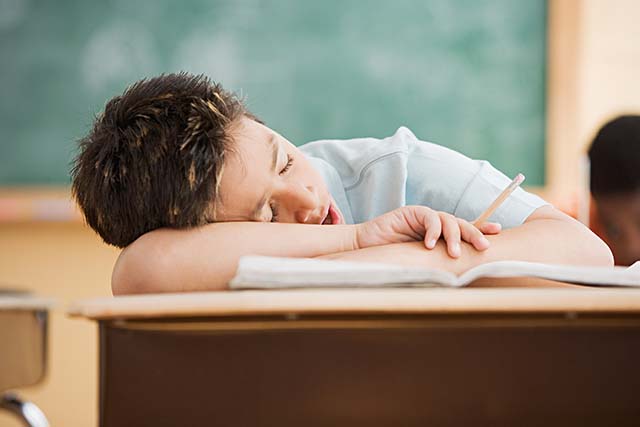Sleep is more important to your child’s adjustment back to the classroom than their brand new sneakers, backpack and fresh school supplies. With quality sleep, kids and (and adults!) are better able to manage their mood and improve concentration and focus. Sleep is also essential for forming and recalling memories which are at the forefront of learning.
The amount of sleep your child needs depends on their biological, social, and emotional needs. Because of this, it can be challenging for parents to determine what this means for their own home. The American Academy of Sleep Medicine (AASM) provides these ranges that can be used as a good starting point:
- Ages 4–12 months: 12–16 hours (including naps)
- Ages 1–2 years: 11–14 hours (including naps)
- Ages 3–5 years: 10–13 hours (including naps)
- Ages 6–12 years: 9–12 hours
- Ages 13–18 years: 8–10 hours
The problem is that American children and teenagers do not get enough sleep. In fact, according to the Center for Disease Control (CDC), nearly 6 in 10 middle schoolers and at least 7 in 10 high schoolers don’t sleep enough during the school week.
So, now that you know how many hours of sleep your child should get, let’s talk about how to make that happen while in the midst of a transition back to school.
Set a bedtime routine
Bedtime routines are important for kids and teens of all ages. The key is to create a consistent routine that your child follows each night. Over time, these habits will signal to the brain and body that bedtime is approaching. A good bedtime routine includes relaxing activities such as: taking a warm bath or shower, brushing teeth, reading, journaling, or meditating.
Exercise regularly
Exercise reduces stress and promotes sleep by increasing the amount of slow wave sleep you get. Slow wave sleep refers to deep sleep, where the brain and body have a chance to rejuvenate. It is important to note that exercising too close to bedtime can hinder sleep so be sure to avoid late afternoon and evening.
Limit napping unless age appropriate
Naps should not be taken if they interfere with sleep at night. Most children will drop the need for an afternoon nap in elementary school. Research shows that napping in adolescence leads to shorter and poorer sleep at night. If your child does need to rest, limit the nap for 30 minutes and avoid the evening hours.
Limit extra curricular activities
Free time and rest are import to a child’s development. When starting back for the Fall semester, choose after school activities carefully and be sure to avoid commitments that run late into the evening.
Decrease technology
We now understand more about the relationship between technology and sleep and research points to blue light exposure as a primary culprit. It is thought that blue light suppresses melatonin, the hormone that tells the body it is time to sleep. Limit the following at least one hour before bed time: television, computers and laptops, cell phones, and video game devices.
If sleep continues to be a problem for you or your child a few weeks into the school year, you might consider seeing a psychologist. Find out more about how Cognitive Behavioral Therapy for Insomnia (CBT-I) can help.

